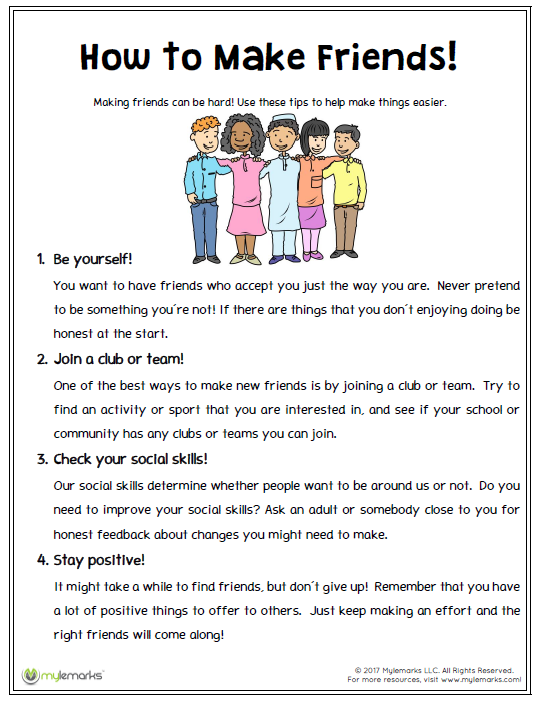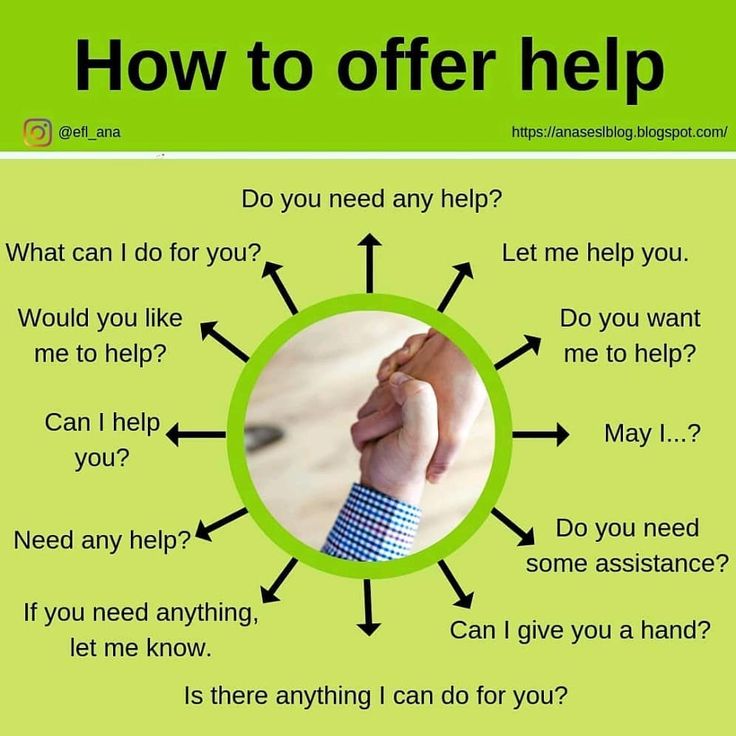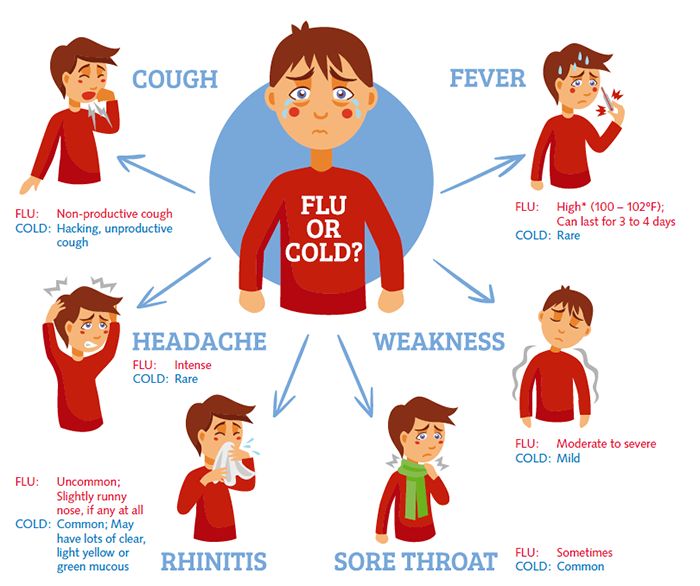How to help a shy child participate in school
How to Help Shy Students Speak Up
Encouraging students to participate can be tricky when it comes to the kid who seems to actively avoid speaking up. I know I find it to be especially complicated when the student who never raises their hand has the most insightful, compelling ideas to share when I meet with them one-on-one. I had one student, Vanessa, who barely spoke at the beginning of the year, even though I knew she had a lot to share. I wanted to figure out how to get her to participate more. But putting a shy, introverted kid on the spot in class, begging them to participate, can be traumatic and most likely won't achieve the outcome you're looking for. So how can you get these students talking?
Further reading: Creating an Engaged and Positive Classroom Culture
Create a Safe SpaceThere is absolutely nothing wrong with being introverted. But it's important for kids to learn the skills they'll need to feel comfortable sharing. When encouraging students to participate, we need to make sure they feel safe contributing in class. We live in a culture that tends to reward extroversion, so it isn't easy to be more of an observer than a participant—both in and out of the classroom. Introverts watch your classroom dynamic and assess whether it's a safe place for them to express themselves. Are mistakes ridiculed? How are "wrong" answers handled? Do the same kids get your attention and praise regularly? The best way to get everyone to participate is to set up standards for all class participation that encourages everyone to try their best. Try including rules such as raising your hand when you have something to say and not calling out.
Small group discussions provide more opportunities for all students, not just the quiet ones, to participate. There is less competition between students, and the flow of the discussion can be more inclusive simply because there are fewer people involved. For more introverted students, this can feel far less intimidating because instead of speaking in front of 30 kids, they only need to face four. This will also make them more comfortable speaking up in front of the entire class later because they will have had the opportunity to work out their ideas with their small group beforehand.
This will also make them more comfortable speaking up in front of the entire class later because they will have had the opportunity to work out their ideas with their small group beforehand.
This was one of the most effective strategies when I was encouraging Vanessa to get involved in class. I noticed that she was starting to feel more comfortable as I used this strategy, and not only was she benefiting from the positive feedback she received from her classmates, but they got to hear the gems of information and insight she shared.
Assign Conversation PartnersWho are the kids that more introverted kids feel comfortable around? Pair them up to discuss the subject or project at hand. Then have each pair share with the class. This way, your shyer students will know that they'll be asked to speak in front of the class, and they'll be able to prepare both intellectually (the material) and emotionally (the courage to share with the class).
Let Them PrepareBuilding on the idea of a predictable event, try to avoid putting your shy kids on the spot. Ask the introverted student if they wouldn't mind sharing a specific thought or idea in class at a specific time in the future. This can be something to start a class discussion or a point to be made in the middle of the lesson. They can prepare and be ready to go when you call on them.
Ask the introverted student if they wouldn't mind sharing a specific thought or idea in class at a specific time in the future. This can be something to start a class discussion or a point to be made in the middle of the lesson. They can prepare and be ready to go when you call on them.
I also use scheduled class presentations. Every week, two students in my fifth grade class present a current events article. They speak to the class about the article they chose, why they chose it, and their opinion. I give them the schedule in advance so each student can prepare, and I intentionally place the kids who may be more nervous in the middle or toward the end in terms of timing. I also pair them with another student who's comfortable presenting so they can rehearse beforehand. It all makes a difference.
Further reading: Do Introverts Have the Right Teacher Characteristics to Succeed?
By using a number of these techniques in my class, Vanessa became a regular participant by January. Come May, she was engaging even more freely. Was she a full-blown extrovert who called out every chance she got? No, but that wasn't the goal. What I wanted, and what I accomplished, was to help her recognize her own strengths as a member of the class and encourage her to share her thoughts. When it comes to encouraging students to participate, these techniques truly work. Give them a shot in your classroom.
Come May, she was engaging even more freely. Was she a full-blown extrovert who called out every chance she got? No, but that wasn't the goal. What I wanted, and what I accomplished, was to help her recognize her own strengths as a member of the class and encourage her to share her thoughts. When it comes to encouraging students to participate, these techniques truly work. Give them a shot in your classroom.
Shy kid? Here's how to help them succeed in school.
Shy kids may not experience school in the same way as their more outspoken peers. But just because your child is shy doesn't mean that they can't fully participate in school. Use these strategies to help your shy child find personalized ways to share their thoughts and gain confidence.
Some children find school a thrilling experience: They wave their hands in the air to answer questions, belt out songs during group sings, and are the first to sit down for snack.
Other children are less thrilled. Shy or more reserved kids can find school overwhelming. They may hesitate to speak out in class, hold back from the group, or prefer to keep to themselves, playing quietly in a corner.
They may hesitate to speak out in class, hold back from the group, or prefer to keep to themselves, playing quietly in a corner.
How to help a shy child participate in school
Realize that shyness isn't a fixed trait. Just because your child is shy right now, this doesn't mean they'll always be that way or that they'll be shy in every situation. There's also nothing inherently bad about being shy, so don't feel like you have to change your child's behavior. Instead, find ways to help them be successful in school, even when they're feeling shy.
Talk to the teacher. Stay in touch with teachers and school staff. Parent-teacher communication is an important tool for helping shy kids in school.
Start by comparing notes on how your child acts at school and at home. What activities do they love at home that aren't part of the classroom? What does your child dislike that they're expected to do at school? Gather information with your child's teachers, and look for ways to help make the classroom an engaging and comfortable place. Meet with the teacher and work out a plan.
Meet with the teacher and work out a plan.
Bring their interests to school. For example, if your child is fascinated by bugs, ask their teacher if they can bring their collection in to share with the class. Your child may balk at making a formal presentation, but there could be an opportunity for them to talk or answer questions. The teacher could hold a bug discussion using your child's materials as the visual aids, or create a bug station based on your child's supplies.
Even if your child doesn't speak up right away, just having their favorite things in class can help melt their shyness. They can participate and feel a sense of belonging, which is a start. Even sharing a book or toy your child loves can help.
Visit their school. Having you visit their classroom can help your shy child feel more comfortable at school. Your schedule may not allow regular or lengthy classroom visits, but even touching base now and then gives you a chance to observe. You might be able to come in to read a book, help at lunch, or chaperone a field trip.
You might be able to come in to read a book, help at lunch, or chaperone a field trip.
Make sure they're challenged. If your child is reluctant to participate in classroom activities, it may be because they're too easy. If you suspect this is an issue, work with the teacher on ways to give your child more challenge. Alternatively, your child may be holding back because the activities in class are too challenging. Talk to your child's teacher to find ways to appropriately challenge your child. Depending on their age, consider involving your child in these discussions as well.
Advertisement | page continues below
Help them at home. Sometimes kids act shy at school because they're anxious about not getting things right. Some children have an easier time grasping new skills in a quiet place, without the stimulation and pressures of the classroom. If your child is awkward painting with a brush, giving a presentation, or writing a story, practice together at home. Give your child chances to improve, but try not to add pressure. The idea is to build your child's confidence.
Give your child chances to improve, but try not to add pressure. The idea is to build your child's confidence.
Focus on their accomplishments. Don't just pay attention to the stumbling blocks. Celebrate your child's wins in and out of the classroom. Playing a sport, learning an instrument, participating in community service projects, and even being a good helper around the house can help build your child's confidence at school.
Be their "student." You can help your young child role-play "school" at home as a nonthreatening way to practice being in the classroom. Set up a classroom with stuffed animals, and let your child act it out. You can help organize the game and participate as one of the "students," but let your child steer the flow of the classroom. You may discover school fears, such as mean kids or a grumpy teacher. If, as their "student," you can play lightly at being scared of the kids or the teacher, your child may find this very funny. Their laughter may help release some of their scared feelings so they can be more confident. Talk about what's going on, ask your child questions, and use the information for talks with their teacher.
Their laughter may help release some of their scared feelings so they can be more confident. Talk about what's going on, ask your child questions, and use the information for talks with their teacher.
For older kids, ask them to teach you or a younger sibling something they've learned at school. Pay attention to how they're communicating as they teach. Start a discussion about how teaching and learning happens in their classroom and what feels good and not-so-good about it. If any issues come up, strategize with your child about how to improve them.
How can I encourage my shy child to speak up?
Just because your child is shy doesn't mean they can't fully participate in school. Instead of asking your child to be more outspoken, encourage them to share their brilliance in a way that feels good to them. Discuss how important it is for people to learn from each other and how they have a unique perspective to bring to school. Discuss different ways to participate in class: talking with a partner, using writing or drawing, discussing with a small group, or sharing with the whole class.
Your child doesn't need to be a gung-ho, first-in-line student to learn. But easing their fears even a little can make school a more enjoyable experience, which promotes learning and is a worthy goal. By following the tips above, you can help your child feel more confident at school.
You want your child to be enthusiastic about school – but try not to worry too much, especially if your child's still in preschool. During the preschool years, kids are just beginning to learn how to interact with peers and participate in group activities. Many preschool-age children still feel most comfortable doing parallel play alongside other kids, observing and imitating rather than playing directly with friends.
In kindergarten most children play interactively, but they're still adjusting to the social environment of school. In both preschool and kindergarten, children are testing new ground and learning new rules of behavior. It's a process that can take time.
As shy kids get older, they may find it more comfortable to play with one friend or a small group of peers. Encourage your child to reflect on the social situations in which they feel more or less comfortable. Discussing and normalizing feeling shy can go a long way.
Encourage your child to reflect on the social situations in which they feel more or less comfortable. Discussing and normalizing feeling shy can go a long way.
Just as personalities differ, kids vary tremendously in how they relate to school. Some children take longer than others to adjust to a daily classroom routine or to a new school, teacher, or class. Some are shy at first but eventually open up. Others stay shy – and there's nothing wrong with that. Normal shyness isn't a problem that needs fixing.
How can I tell if my shy kid needs help?
Most shyness or quietness isn't a serious problem, but in some cases shyness can be debilitating, causing kids to withdraw and avoid social situations. In these cases, problems with socializing can continue into adulthood. Shyness can also be a sign of an anxiety disorder in kids.
A few red flags may indicate that your child needs professional attention. Talk to your child's pediatrician or the school psychologist if your child:
- cries or throws tantrums on a regular basis before or at school
- is significantly withdrawn most of the time, making little eye contact
- acts violently in school, hitting other kids or teachers
Also, if your child's shyness interferes with daily life and friendships, ask your child's doctor for a referral to a therapist.
Shy child: what to do and how to help him
Young children experience shyness even in a safe, according to parents, environment. A shy person - and even more so a child - is too sensitive to rejection by other people. He prefers to remain in the shadows, not to show himself. The American social psychologist Philip Zimbardo compares this personality trait with voluntary deprivation of liberty. He dedicated the book "The Shy Child", which he co-authored with Shirley Radle, to the phenomenon of shyness.
Causes of shyness
There is a hypothesis that shyness is a trait that is inherited. But it is quite difficult to accurately identify the factors that influence the formation of a shy personality. It can only be stated with certainty that if parents do not teach their children to easily communicate and get to know different people by their example, the children will grow up shy.
Other triggers for shyness:
1. The development of skills and abilities that a child often cannot master at a young age (for example, reading at the age of two) cause dissatisfaction of parents, and the child withdraws into himself and perceives the love of loved ones as a merit for good behavior.
2. Inability to behave in different situations at a too early age, when adults simply did not teach and explain how and where it is customary to start a conversation, causes a strong fear of any contact in a child prone to shyness.
3. Control and excessive discipline when the child is simply not given the right to vote.
4. And too different upbringing of girls and boys, when the child does not understand how to communicate with people of the opposite sex.
Shyness at preschool age
The environment in which the shy child is located has a bad effect on his emotional state. The task of parents is to teach him to adjust the world to his own needs instead of passively accepting the negative influence from contacts. Once on his TV show, American journalist Phil Donahue conducted an experiment. Two shy strangers were seated on adjacent chairs facing the auditorium. They were uncomfortable, it was impossible to establish contact, their eyes wandered fearfully around the hall. Everything changed when the strangers' chairs were turned away from the crowd and placed opposite each other. It became noticeably easier for these two to be in the TV studio, and they were able to start getting to know each other.
Everything changed when the strangers' chairs were turned away from the crowd and placed opposite each other. It became noticeably easier for these two to be in the TV studio, and they were able to start getting to know each other.
Parents can help even the most timid child. Try to have him communicate with strangers
If guests or a repairman are to come, prepare your child in advance: tell about the purpose of the visit, what the person will do at your house. And with the guests who have come, you should not discuss shy behavior, exposing timidity as a disadvantage.
Create situations where the child will have the opportunity to communicate with peers. For example, in a kindergarten, on a playground or in a dance studio. Do not interfere with the way the child meets other children. Try not to dress your shy child in clothes that may be very different from those accepted in the peer group. Support his need to be alone sometimes, but do not specifically isolate him from society. The beginning of friendship in a familiar home environment is much easier for such children.
The beginning of friendship in a familiar home environment is much easier for such children.
Zimbardo insists on active physical development. Confidence in one's own body, developed physical endurance and dexterity help the child feel comfortable and make friends with peers easier. Zimbardo argues that “a child who has an idea of his own physical capabilities, can reasonably judge what he is capable of and what he is not, he will never go crazy. <…> Willingness to take risks characterizes leaders and people who are successful in business.”
Caregivers exacerbate shyness by perceiving the “goodness” of girls and boys as a positive quality. Active children who are not afraid to show themselves, on the contrary, deserve the censure of adults. But it is also worth understanding that the negative attitude of a significant adult to a calm character makes a reasonable child downtrodden and timid.
How to develop sociability
From an early age, tell your child stories in which reality is intertwined with fantasy. Their main character should be your child. Let the story begin in some familiar place, but embellish reality. Behind the high mountains that no eagle can fly over, beyond the wide seas in which white sharks and sirens swim, lies the city ... Let other family members become participants in the fairy tale, just change their names slightly. A big trouble should happen in the story, which your strong, courageous, quick-witted and beautiful child will eventually solve. Co-writing such stories helps the child to believe in himself, teaches him to be the center of attention and not be afraid to act.
Their main character should be your child. Let the story begin in some familiar place, but embellish reality. Behind the high mountains that no eagle can fly over, beyond the wide seas in which white sharks and sirens swim, lies the city ... Let other family members become participants in the fairy tale, just change their names slightly. A big trouble should happen in the story, which your strong, courageous, quick-witted and beautiful child will eventually solve. Co-writing such stories helps the child to believe in himself, teaches him to be the center of attention and not be afraid to act.
The second way to develop sociability is when a shy child plays with a younger child. This is proved by an experiment conducted by psychologists at the University of Minnesota. Scientists have come to the conclusion that playing with small children allows a timid child to show and realize his leadership qualities.
Shyness at school
Even self-confident and sociable children depend on the school environment and the teacher's attitude towards them. Shy children need to understand that they are no different from the other guys in the group. Not every teacher knows that it is necessary to pay attention to such children in the right way: to talk about everyday topics, but not touch those that can cause embarrassment. If shyness affects learning, it is better to make contact with such a child after school hours. For example, ask him for help after class.
Shy children need to understand that they are no different from the other guys in the group. Not every teacher knows that it is necessary to pay attention to such children in the right way: to talk about everyday topics, but not touch those that can cause embarrassment. If shyness affects learning, it is better to make contact with such a child after school hours. For example, ask him for help after class.
It is necessary in a calm environment to assure him that he can ask questions about his studies without being afraid. In children's groups, where the competitive element is reduced to a minimum, and help and attention to each other are in the first place, usually there are no problems even for very timid schoolchildren.
No matter how wise your child’s teacher may be, with the beginning of studies, shyness (if any) becomes the dominant personality trait
how it will be approved by the teacher. Today, school is the place where a lot is demanded of children, criticized for mistakes. The main disadvantage here is that the child behaves like a child. Very often for a first grader, such an environment becomes a shock. Sometimes teachers try to re-educate the quiet and do it in the worst possible way.
The main disadvantage here is that the child behaves like a child. Very often for a first grader, such an environment becomes a shock. Sometimes teachers try to re-educate the quiet and do it in the worst possible way.
Zimbardo criticizes school arrangements. He claims that the school is determined to produce passive and obedient citizens. The attention of children from the natural state of "here and now" is constantly directed to an uncertain future, for the sake of which one must study well.
A shy child already thinks too much about the consequences of his actions. His slight anxiety quickly develops into fear and anxiety, it is hard for such a child to enjoy the moment. The pleasure of learning is replaced by a system of external rewards for completing someone else's task on someone else's terms, which in no way contributes to the formation of an objective and prosperous attitude towards oneself in the child.
For success in school, parents must always be on the side of the child. Do not use the word "shy" in a conversation with a teacher, but call your child calm, reasonable, attentive. Never agree with the label "lagging behind" and even more so "backward". And always remember that the teacher can make mistakes.
Do not use the word "shy" in a conversation with a teacher, but call your child calm, reasonable, attentive. Never agree with the label "lagging behind" and even more so "backward". And always remember that the teacher can make mistakes.
Shy teenager
Shyness can make adolescence the worst period in life. Popularity in school is more important than grades, and it is the lack of popularity that makes the shy teenager suffer even more. Girls are especially subject to suffering, from whom amazing beauty is demanded from an early age. And if a girl does not look like the ideal accepted in the school company, she is in a state of constant dissatisfaction with herself and irritation. Shy teenagers are twice as likely to start drinking and smoking than their more confident peers. They consider alcohol and drugs a means of getting rid of their own timidity.
Parents can help a teenager, but this will require patience. Your child today can be affectionate and accommodating, and tomorrow forget all persuasions and promises. Zimbardo talks in detail about the problems that affect a teenager. At the same time, adults may not even suspect that unfashionable trousers or slight skin rashes can make him unhappy. And if in elementary school you closely monitored the behavior of everyone who surrounds your child, then in the senior school, reduce control to a minimum.
Zimbardo talks in detail about the problems that affect a teenager. At the same time, adults may not even suspect that unfashionable trousers or slight skin rashes can make him unhappy. And if in elementary school you closely monitored the behavior of everyone who surrounds your child, then in the senior school, reduce control to a minimum.
At the end of the book, Zimbardo, among other things, refers to grown-up boys and girls. He tells how you can understand and solve their problem in seven steps, and also gives specific recommendations for communication.
The phenomenon of childhood shyness is described in the book The Shy Child by Philip Zimbardo, co-authored with Shirley RadlePhoto: iStockphoto (volkovslava, NiDerLander, ilona75, gpointstudio, Hramovnick)
Cover image: iStockphoto
0003
How to overcome a child's shyness and insecurity
Shy children are similar to each other - they are indecisive, insecure, have difficulties in learning and communication. How often does it happen that, knowing the correct answer to a question, the child is perplexedly silent, and when he goes to the blackboard, he is covered with red spots and experiences panic fear. The situation escalates in the senior school age, when a teenager has to choose a profession and form a successful career. To prevent children's indecision from becoming a serious psychological problem, it is very important to know how to help a child overcome shyness.
How often does it happen that, knowing the correct answer to a question, the child is perplexedly silent, and when he goes to the blackboard, he is covered with red spots and experiences panic fear. The situation escalates in the senior school age, when a teenager has to choose a profession and form a successful career. To prevent children's indecision from becoming a serious psychological problem, it is very important to know how to help a child overcome shyness.
Causes of shyness in children
Of paramount importance in overcoming child shyness is the determination of its root cause and provoking factors. Possible reasons include:
- difficult family relationships;
- fear of failure;
- psychological trauma;
- personal character traits;
- Borrowed behavior.
Only an experienced psychologist can determine the real cause of the problem. If your child experiences anxiety and difficulties in communication, difficulties in adapting to school and kindergarten, you can get professional psychological advice at the Rostum Academy educational center. Qualified specialists will help you build harmonious relationships in the family and tell you how to overcome the shyness and insecurity of the child .
Qualified specialists will help you build harmonious relationships in the family and tell you how to overcome the shyness and insecurity of the child .
How to save a child from shyness: tips for parents
The main task of parents who are faced with the problem of child shyness is to help the student become self-confident, raise his self-esteem and develop a positive self-perception. What can parents do in such a situation?
- Encourage communication and do not scold for shyness. Praise the child in those situations when he was able to master himself in an unfamiliar environment or met a new friend. Encourage him to talk more. And never scold for fear.
- Consciously create new situations. Invite guests to your home more often, encourage your child to participate in contests and competitions, enroll him in the sports section.
- Never single out shyness as a negative trait. On the contrary, in communicating with other people, try to emphasize the delicacy, restraint of your own child.

- Give the children a pet (such as a dog). Daily walks with a four-legged friend will expand the horizons of your children and contribute to new acquaintances.
These recommendations will be especially effective for children of primary school age. However, in the case of adolescent shyness, a different approach is required. At the age of 13–15, each person undergoes a reassessment of internal values. And it often happens that many teenagers negatively evaluate their own "I", considering themselves uninteresting and insignificant to others. In this situation, it is very important for parents to support the child and show the value of his opinion.
Games and exercises to overcome childhood shyness
There are many games and exercises that can help your child get rid of shyness.
- Exercise "If only I were bolder" - Take turns with the child to make arguments in favor of courage and self-confidence by modeling various situations.
 Depending on the simulated situations, the exercise can be used both for younger students and for teenagers.
Depending on the simulated situations, the exercise can be used both for younger students and for teenagers. - Game "Live illustration" (for children 5-12 years old) - the parent reads out a poem (story, fairy tale), inviting the child to illustrate the emotions heard with facial expressions and gestures. Agnia Barto's poems, filled with childhood experiences and subtle humor, are best suited for such a game.
- Exercise "Who has more arguments" (5-12 years old) - participants in the game choose a statement (for example, "reading is useful because ...") and take turns giving arguments for its correctness. It is best to choose life situations for such an exercise and play together.
When do you need professional help?
If a student cannot get rid of shyness on his own, and it becomes especially debilitating, it is necessary to seek professional help. Psychological consultations, relaxation programs, stress management and trainings on the topic "How to overcome a child's shyness" will be useful for shy children.












